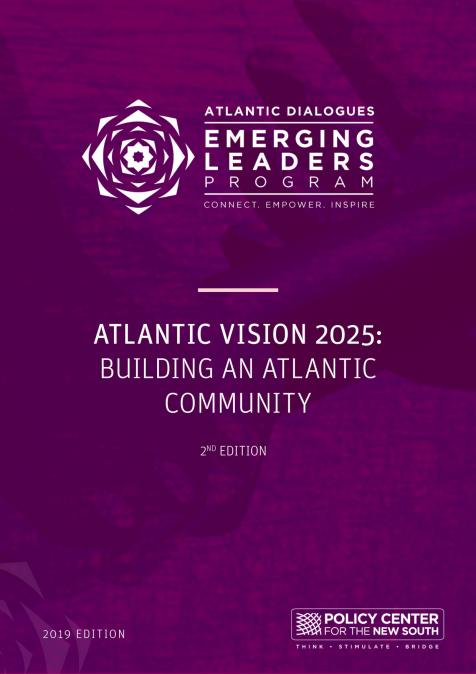Publications /
Opinion
A Case for Regulators to Green Financial Inclusion
Financial Inclusion is an Excellent Tool for Combating Poverty
It is well known that supporting financial inclusion is a relevant tool in lifting people out of poverty. There is plenty of empirical evidence showing that financial inclusion significantly reduces poverty and income inequality in developing countries. Concerted efforts to support financial inclusion globally have existed since the United Nations Capital Development Fund (UNCDF) started doing so in the 1990s. Many people became aware of the power of providing access to financial services in eradicating poverty since Muhammed Yunus won the Nobel Peace Prize in 2006 for his pioneering work in financial inclusion in Bangladesh.
Climate Change Amplifies Hardships for the Poor
Given the empirical evidence on, and general appreciation of financial inclusion, it is now easier to make a compelling case for promoting it. To a lesser extent, the connection between fighting poverty and climate change has been established and engrained in the political consciousness. The effects of climate change on the poor vary widely depending on regional circumstances, but in general, climate change disproportionately has a negative impact on those living in poverty and those who are vulnerable.
Furthermore, the Intergovernmental Panel on Climate Change (IPCC) highlighted in their Special Report on Global Warming of 1.5 that it °will still result in increased famine, extreme weather, species extinction, loss of entire ecosystems, and loss of habitable land. This will push more than 100 million into poverty and cause many to lose their homes.
Nexus of Green and Inclusive Finance
To combat the effects of climate change (especially the impact on the most vulnerable), all actors need to work on solutions to help mitigate its dire consequences; these include the financial inclusion community.
The understanding and competence around financial inclusion has become more sophisticated over the years. This can be partly attributed to the Consultative Group to Assist the Poor (CGAP ), the world’s leading think tank in advancing financial inclusion, which has been around for over a quarter of a century.
As early as 2012, a blog post already alluded to the link between climate change and financial inclusion. Since then, there have been efforts to coordinate and promote more endeavors at the nexus of green and inclusive finance.
The Network of Central Banks and Supervisors for Greening the Financial System (NGFS) was launched in 2017. While many of its approximately 100 members certainly also promote financial inclusion, the focus seems to be on other (arguably still very relevant) topics in green finance. The Alliance for Financial Inclusion (AFI) – a peer-to-peer learning network of the Global South - launched the Inclusive Green Finance working group in 2019 to help regulators learn from each other about their challenges and progress in promoting green finance for those living in poverty and marginalized.
These are valiant efforts on an international scale, but ultimately real change has to be adopted at the country level. Who is best positioned to look at this cross-section of financial inclusion, mitigating the effects of climate change, and working on a local level? There is only one answer that will exude aptitude and has the system-wide clout to make a large-scale difference for the financial system: central banks and other regulators of the financial system.
Integrated Regulation
Key to any functioning financial system is a regulator that ensures fiscal stability. Yet, central banks no longer only have the mandate to provide financial stability by determining capital and reporting requirements. The regulation also means that the financial system should function in an overall stable environment, including financial inclusion, and minimizing environmental and climate risks.
Regulators have already made some laudable achievements in integrating green considerations into their financial inclusion policies. For instance, Bangladesh is one of the few countries globally with specific data indicators looking at inclusive green finance. Mongolia has a well-developed green taxonomy and data on green loan investments. The Philippines has sustainable central banking as a prerogative, and Fiji, a country particularly imperiled by the effects of climate change, provides an annual financial inclusion report that includes specific information on green topics relevant to regulators.
While these recent developments are a positive start, there remains a lot to be done. Some resources look at the cross-section of financial inclusion and green finance, such as the current policy landscape on inclusive and green finance policies from AFI. These include discussions on the changing data landscape for central banks which provides for environmental data and more information on the critical factor for decision making in central banking. Yet, there are many information gaps, especially at the beginning of the policy development process where some areas lag behind—a clear definition (or taxonomy) of what encompasses green finance and inclusion and more data on green finance affecting the poor will make policies of central banks more effective. A lot can be achieved at the cross-section of financial inclusion and green finance. However, the learning curve is steep, and knowledge needs to be shared amongst central banks to improve the success of any efforts in promoting green growth globally, not just the financial system but financial inclusion in particular.
(*) Morten Seja is an alumnus of the Atlantic Dialogues Emerging Leaders Program 2014.



